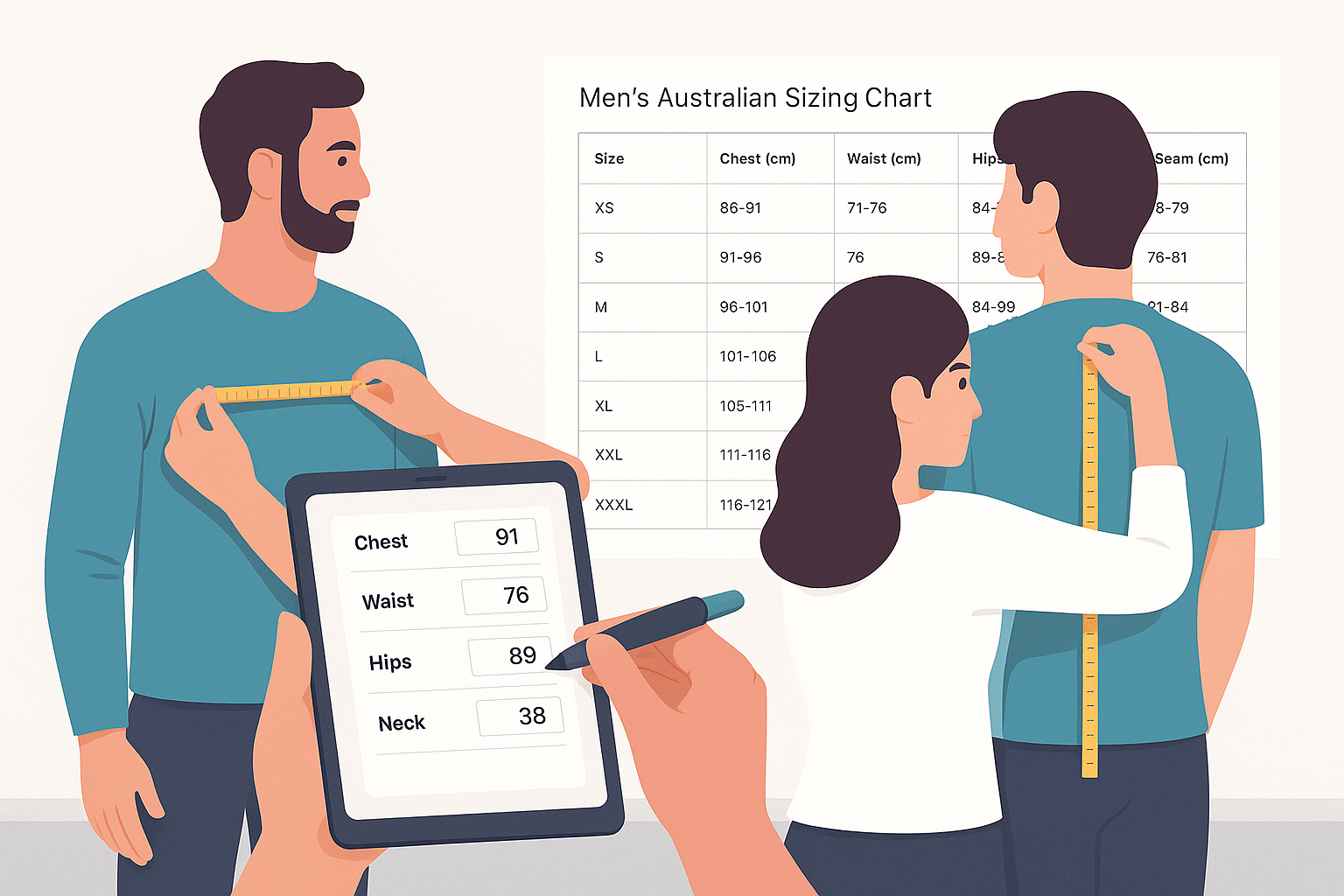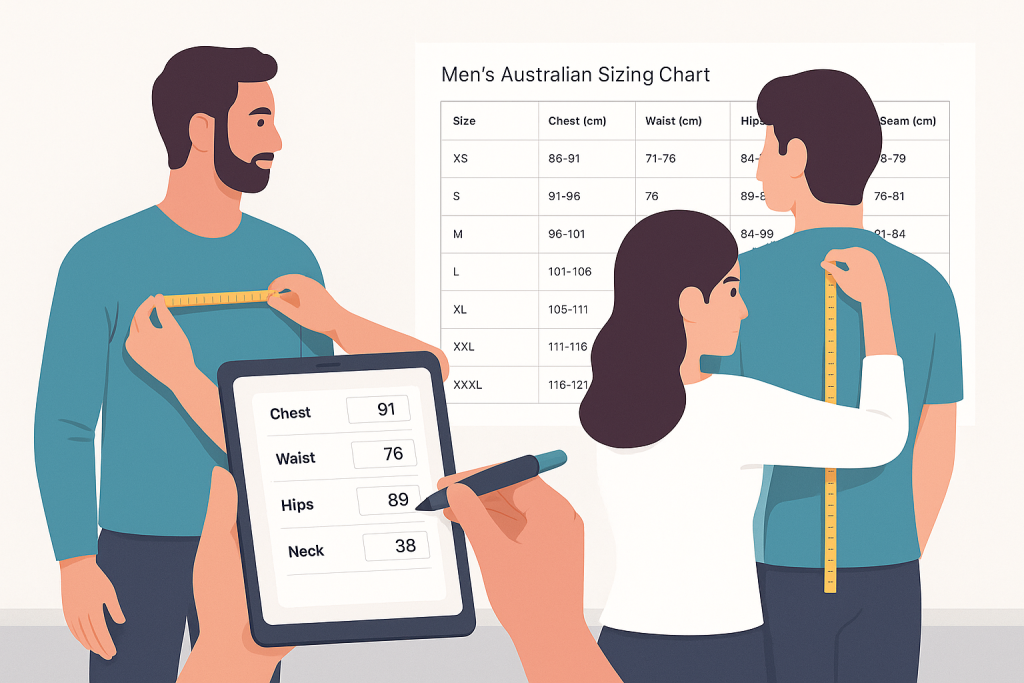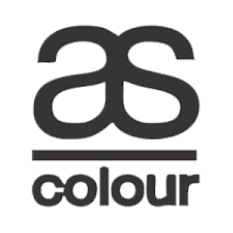A well- fitted livery is far further than just apparel it’s a critical element that enhances professionalism, ensures comfort, and maintains safety in the plant. Whether you are provisioning hospitality staff who need to move gracefully through a busy eatery, healthcare workers who bear both mobility and hygiene, or tradespeople who need durable, defensive gear, accurate measures are the foundation of a livery that looks sharp and functions effectively.
A duly fitted invariant boosts hand confidence and productivity while projecting a cohesive brand image, whereas poor fit can lead to discomfort, safety hazards, and frequent reserves that drive up costs. This companion provides a comprehensive, step- by- step approach to measuring workers rightly, helping you avoid common sizing miscalculations and elect uniforms that fit impeccably through all diligence. By taking precise measures and understanding how different places bear specific fits, you will insure your platoon is equipped with uniforms that support their work while maintaining a polished, professional appearance.
Why Fit Matters More Than You Suppose
1. Professionalism & Brand Image
- A crisp, well- acclimatised livery conveys capability and attention to detail.
- Ill- befitting uniforms (too tight, too loose, or wrinkled) can make workers — and by extension, your business — look unskillful.
- A 2012 study in the Journal of Experimental Social Psychology found that wearing well-fitted, professional uniforms enhances perceived authority and self-confidence in workplace settings (Adam & Galinsky, 2012). This effect, termed ‘enclothed cognition,‘ demonstrates how clothing fit directly influences employee mindset and client perceptions.
2. Comfort & Productivity
- A livery that fits well allows for ease of movement, reducing fatigue during long shifts.
- Poor fit (e.g., tight sleeves, restrictive obis) can beget discomfort, leading to distractions and dropped effectiveness.
- In diligence like healthcare or construction, mobility is pivotal — ill- befitting uniforms can hamper performance.
3. Safety & Compliance
- Loose apparel can get caught in ministry (a major hazard in artificial settings).
- Redundant fabric in healthcare uniforms may drag against shells, adding impurity pitfalls.
- High- visibility workwear must fit snugly to meet Australian safety norms (AS/ NZS 4602.12011).
4. Continuity & Cost effectiveness
- Uniforms that fit rightly witness lower strain on seams and fabric, extending their lifetime.
- Inadequately fitted garments wear out briskly, leading to frequent reserves and advanced costs.
The Consequences of Poor Fit
- Hand Dissatisfaction – Workers forced into uncomfortable uniforms are less likely to take pride in their appearance.
- Increased Livery destruction – Bad fits lead to further reserves, raising charges.
- Safety pitfalls – In diligence like mining or electrical work, indecorous fit can be dangerous.
Essential Tools for Measuring workers
Gather these tools before starting
- Flexible measuring tape recording – A soft, non-stretchable tape recording ensures delicacy.
- Size maps – Refer to supplier-specific maps (like VMA Uniforms’ size companion).
- Tablet or digital form – Record measures totally.
- Backing (if demanded) – Some measures (like back length) bear help.
Step- by- Step Measurement Guide
1. Casket/ Bust dimension
- Wrap the tape recording around the fullest part of the casket (under the armpits).
- Keep the tape-recording snug but not tight.
- For bust measures, ensure the tape recording runs over the shoulder blades for delicacy.
Common Mistake Pulling too tight alters the fit, leading to discomfort.
2. Waist Measurement
- Measure around the natural midriff (above the belly button).
- For pants or skirts, ensure the hand isn’t stinking in their stomach.
Tip If uniforms bear a put away- in shirt, add 2- 3 cm for ease.
3. Hipsterism dimension
- Measure around the widest part of the hips (generally 18- 20 cm below the midriff).
- Critical for fitted skirts, trousers, or overalls.
4. Inseam (Leg Length)
- Measure from the crotch to the asked pant length (ankle or bottom for full- length).
- For safety gear, consider whether thrills will be worn.
Pro Tip Have the hand wear their usual work shoes for perfection.
5. Sleeve Length
- launch at the shoulder confluence, run down to the wrist bone.
- For short sleeves, measure from shoulder to asked length (e.g.,mid-bicep).
Note Long- sleeved uniforms should allow wrist movement without riding up.
6. Neck Measurement (For Shirts)
- Wrap the tape recording around the base of the neck, leaving a cutlet’s range of space.
- Essential for button-up shirts to avoid choking or peering.
7. Shoulder range
- Measure from the external edge of one shoulder to the other.
- Too narrow restricts movement; too wide aesthetics saggy.
8. Back Length (For Jackets or Long covers)
- launch at the base of the neck, measure down to the asked hemline.
- Important for lab fleeces, cook jackets, or blazers.
Uniform-Specific Measurement Tips
Hospitality & Chef Uniforms
- Cook jackets need redundant room for arm movement.
- Aprons should sit comfortably around the midriff without sagging.
- relate to hospitality livery guidelines for assiduity norms.
Healthcare Scrubs & Lab Coats
- Scrubs should allow easy bending and stretching.
- Lab fleeces must cover the torso completely for protection.
Industrial & Safety Workwear
- High- visibility vests must fit snugly without riding up.
- Coveralls bear precise inseam and torso measures.
Common dimension miscalculations to Avoid
- Guessing sizes – Always measure, indeed if you suppose you know their size.
- Ignoring posture – Have workers stand naturally for accurate readings.
- Overlooking seasonal wear and tear – Account for layering in colder months.
- Using stretched or old measuring videotapes – Replace worn- eschewal tools.
How to Use Size Maps rightly
Suppliers give size maps, but they vary between brands. Always
- Compare measures to the specific brand’s map.
- Check for Australian sizing( US/ EU sizes differ).
- When in mistrustfulness, size up – differences can acclimate slightly larger fits.
For illustration, VMA Uniforms’ size companion helps match measures to their ranges.
When to Consider Custom-Made Uniforms
While off-the-rack uniforms work well for many businesses, there are situations where custom-made uniforms become not just preferable, but necessary. Standard sizing simply can’t accommodate every body type or meet every occupational requirement. Custom uniforms ensure every employee—regardless of shape, size, or job demands—has workwear that fits properly, functions effectively, and reinforces your brand’s professional image.
Key Scenarios Where Custom Uniforms Are Essential
Non-Standard Body Types
Off-the-shelf uniforms often fail to accommodate employees who fall outside average sizing ranges. Custom tailoring is ideal for:
- Tall or petite staff who struggle with sleeve lengths or torso fits
- Broad-shouldered or athletic builds needing extra room in specific areas
- Plus-size workers who require proper proportions rather than just larger versions of standard cuts
Specialised Occupational Requirements
Certain jobs demand uniforms with precise technical specifications:
- Flame-resistant gear for electricians and welders that must meet exact safety standards without compromising mobility
- High-visibility workwear for construction crews needing specific reflective panel placement
- Healthcare uniforms with antimicrobial fabrics and functional pockets for medical tools
Enhanced Brand Presentation
Custom uniforms offer branding advantages that pre-made options can’t match:
- Tailored silhouettes that project a premium, cohesive image for customer-facing roles
- Strategic logo placement and color matching to strengthen brand recognition
- Unique design elements that set your team apart from competitors
Long-Term Cost Efficiency
While custom uniforms have higher upfront costs, they often prove more economical because:
- Better durability from proper fit reduces replacement frequency
- Fewer alterations are needed compared to modifying off-the-rack options
- Employee retention improves when staff feel valued in comfortable, well-fitted attire
Industry Compliance Needs
Some sectors have strict uniform regulations that require customisation:
- Aviation crews needing precisely measured safety gear
- Laboratory technicians requiring exact-fitting protective wear
- Security personnel whose uniforms must accommodate tactical equipment
For businesses prioritising professionalism, safety, and employee satisfaction, custom uniforms offer solutions that standard options simply can’t provide. By investing in tailored workwear, you’re investing in your team’s performance, your brand’s image, and ultimately, your company’s success.
Need help determining if custom uniforms are right for your business? VMA Uniforms’ experts can guide you through the process from measurement to final design.
Final Checklist Before Ordering
Before submitting uniform orders:
✅ Double-check all measurements.
✅ Confirm sizing with employees (some prefer a looser fit).
✅ Review supplier return policies in case adjustments are needed.
How This Guide Helps
This step-by-step guide covers:
✅ Essential measuring techniques – From chest to inseam, ensuring no detail is missed.
✅ Industry-specific considerations – Tailoring fits for hospitality, healthcare, trades, and more.
✅ Common mistakes & how to avoid them – Preventing ordering errors that waste time and money.
✅ Choosing the right supplier – How to match measurements with size charts for a flawless fit.
By investing time in accurate measurements now, you’ll save money, boost morale, and maintain a professional image long-term.
Conclusion
A perfect uniform fit boosts morale, safety, and professionalism. By following precise measuring techniques and avoiding common errors, businesses can ensure employees are comfortable and presentable.
For high-quality uniforms in Australia, explore VMA Uniforms’ range, offering tailored solutions for various industries.
Need help? Consult their sizing experts or request a fitting guide for large orders.
FAQs
Q: How often should uniforms be re-measured?
A: Annually, or if an employee’s size changes significantly.
Q: What if an employee is between sizes?
A: Size up for comfort, then alter if necessary.
Q: Can we measure over clothing?
A: Only if the clothing is thin and form-fitting; otherwise, measure directly.
By prioritising accurate measurements, businesses invest in employee satisfaction and a sharper brand image.










